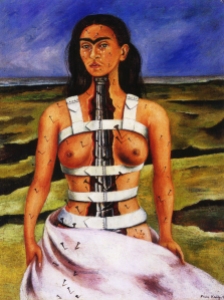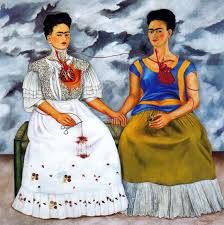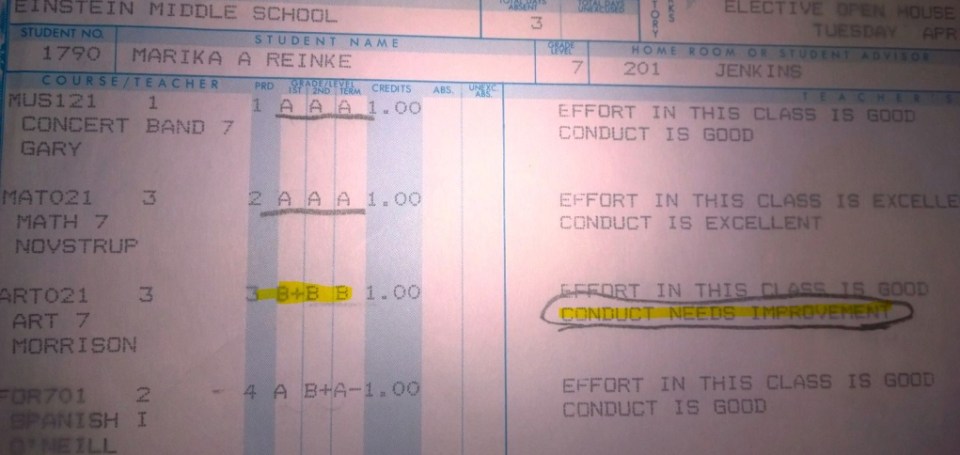She did not create to please you
Look at her.

She is un-impressed with you, the viewer. You must prove that you are “good” enough for her. You must come to her and on her terms. Can you even begin to understand her?
She is fierce, defiant, unabashedly sorrowful and reserved. Her reserve is ever-present like a question mark in her work. A sign of pain, distrust and distance despite the intimacy of her work. Her work is authentically hers and it is your privilege to be viewing her.
She did not care if you thought her beautiful
Equally, she accentuates the flaws that most modern woman would Photoshop; the mono-brow and mustache. They highlight the realness of her, a person, not a beauty to behold. They highlight the masculine and feminine; the not-one-or-the-other and certainly not afraid of the un-attractive.
These “flaws” invite you to look inside her through the symbols of her work; entrapped in a thorn necklace or held up by a broken column. Her goal is to be real, so that you might understand and become more authentic with her. In order to do this, she painted what you would not call beautiful and with un-seeable symbols whose only life was on canvas and in her mind.

She was not squeamish

Blood is a life force, it sustains and connects. It binded her many selves and kept her alive at times she didn’t want to live. She had much blood in her life; in her accident that left her immobilized and subject to intermittent bouts of pain and in the miscarriages she suffered. She was not afraid to paint the painful truth even if it contained blood or made you uncomfortable. Discomfort makes you think differently, it teaches compassion and it transforms. It is a fact of life and you can not hide from it. But you can learn from it, feel from it, think about it, connect with it and experience life more deeply because of it.
she unleashed her passion
She felt all her emotions fully, and held them with equal weight in all her relationships. She did not brush them aside to please her lover’s passion. This was true in her passionate, unfaithful and complicated love of her off and on husband Diego Rivera (and famous Mexican painter) and other lovers both male and female. And equally apparent in her fierce loyalty to Mexico, her home and birthright which bruised her with its macho and sexist culture both unfaithful and unjust. She loved deeply and fully with equal pain, complexity and intensity, enveloping the connection as close as atom to atom and as large as the universe.

she could not be silenced
Ultimately, through her persistence, her voice was heard (and even more loudly in death). Despite criticism, troublesome health, consistent and debilitating pain and deceit, she remained stubbornly steadfast that her voice mattered and painted on.

Life = Art
It is impossible to talk about Frida Kahlo‘s art without referencing her life. Art = life and few artists are as intimately and personally raw as Frida Kahlo. And she was right. In work, family, friends, leisure, in love and grief, in joy, tragedy and triumph – it is life, un-separated and without compartments, where art begins. This space that holds the hours, events, the world and people paradoxically together, is a brave and lonely space and yet strangely connects and unites us.
If you would like to learn more about Frida Kahlo I recommend reading this book. Frida: A Biography of Frida Kahlo – October 1, 2002 by
It is the book that inspired me to begin my journey as painter which I’ve referred to in the following posts.












You must be logged in to post a comment.